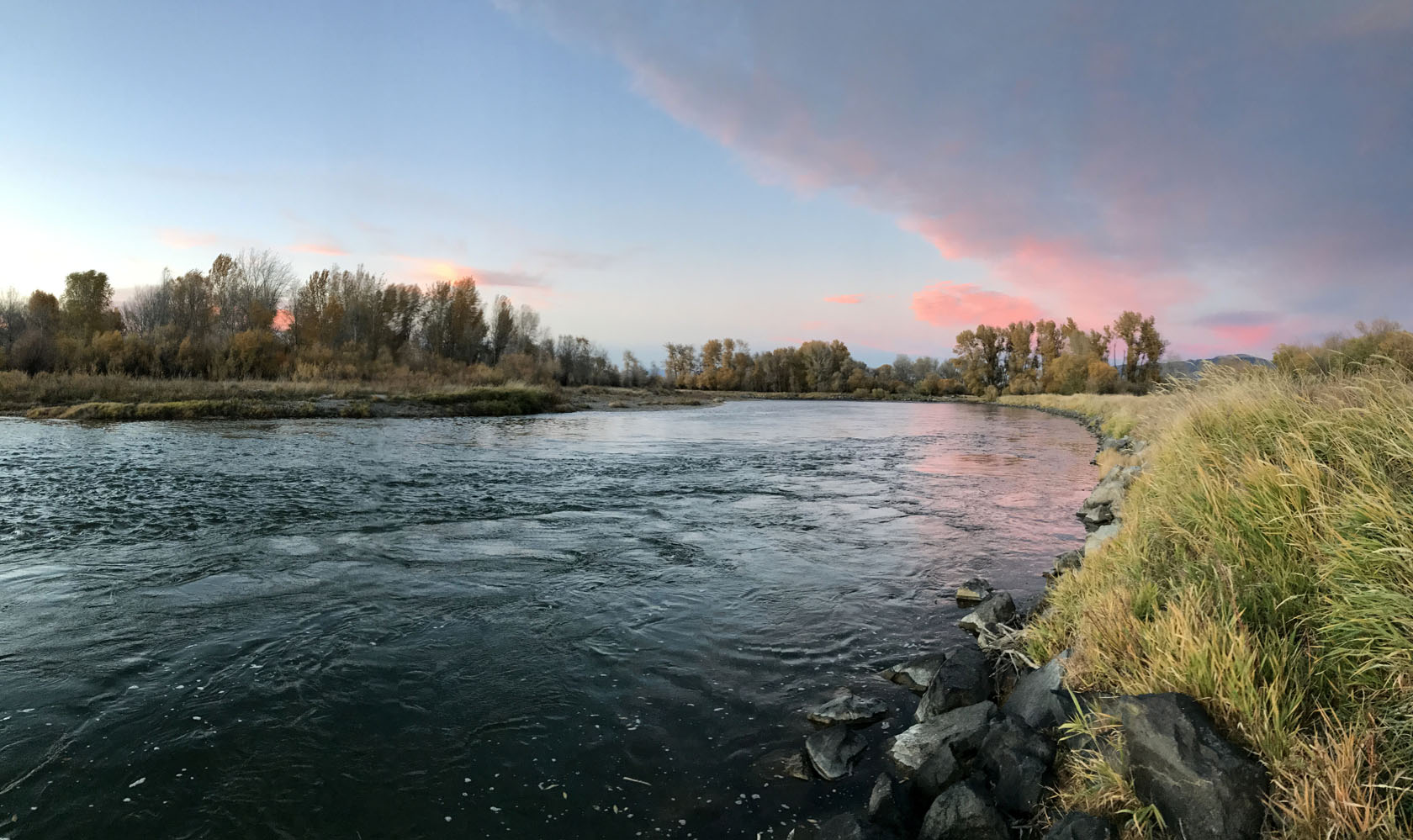Hiding under an inverted canoe, a shield of epoxied fiberglass shards, we are almost able to keep our entire bodies out of the torrential rain. We’d been enjoying a leisurely float down the Jefferson when a sudden thunderstorm flooded the languid river, causing our boat to overturn, our possessions lost to the raging current. I am 11-years old, wearing a two piece, and feeling terrified as booms of thunder grow louder and louder in the distance.
Floating the local rivers is practically a national pastime in my hometown of Bozeman, Montana. On this sunny afternoon in July, my mom is hosting a float as an employee bonding day for her small company. She brings me and my younger twin sisters along for the fun.
Four adults, three kids, and two fully grown Newfoundlands are stuffed into a pair of canoes and three large inner tubes. The canoes hold the cooler of beer, extra clothes, towels, my mom’s camera, and car keys. Cell phones haven’t been invented yet.
In big sky country, you can usually see the weather coming from miles (and miles) away, but on this particular day we are surprised when rain upstream causes the river to swell rapidly despite the sunny skies overhead. Sharing a canoe with two dogs steered by my mom’s male colleague John, we are tossed suddenly into the water after careening helplessly over a hidden log. Coolers, clothes, children, and Newfies fly from the boat, and, motivated by panic, we make our way to the closest dry spot around: a quickly shrinking finger of land smack in the middle of the raging current. Forced to complete a not inconsequential river fording, we find ourselves in a ditch at the far side of the river, where we sit panting as the drama of the last ten minutes pulses through our shivering bodies.
I manage to wrap myself in the one soaking wet towel we salvaged as my mom envelopes my sisters in her arms. The thunder grows louder, then, mercifully softer in the distance. As the storm clears, the adults emerge to take stock of our situation. Getting back in the river to cross over to the road is a non-starter, the water is too high. Behind us, we spot a farmhouse in the distance sitting alone in a vast field. It can’t be more than 3/4 mile away.
We set out barefoot, careful not to step on the sharp, recently harvested wheat. My sisters complain about being cold. I’m cold too.
We trudge on until we are stopped by the first obstacle: a bog.
For the initiated, bogs are waterways used in agriculture. They’re about 3-5ft wide, 6-8ft deep, and full of brown, fertilizer-imbued water. Not exactly the type of place you’d like to go swimming.
But we have no other choice. We can’t jump it, we can’t go back from whence we came, and with no shoes we can’t exactly go walking around looking for other options. My mom goes in first, dog paddling across and scrambling up the other side. John takes turns lowering me and my sisters into the lentil-colored soup and we paddle to my mom’s down stretched arms, careful to keep our heads above water as instructed. It dawns on me now that I have no idea what happened to the other two adults and dogs. At least the bog is warm.
Everyone safely on the other side, we take no more than six steps and encounter a barbed wire fence. My mom pulls the wires up and down to create a hole. The twins climb through without incident. I duck my head and lift my first leg. Righty clears, but I am not the most coordinated and my left leg catches a few inches above the knee. I yelp, and look down to see a deep, angry cut releasing red tears down my leg. My eyes pool instantly, and I bite my lip to keep my crying. I am too old to cry over a little blood.
The cut stings as I am lowered into what will be the second of three bogs slowing our progress. This gash is definitely going to get infected, I think to myself. My mom looks at me softly, betraying her shared concern.
We eventually reach the little farmhouse. No one is home. Bereft, bleeding, and covered in gook, we huddle in a group on the yellow wrap-around porch. A reconnaissance party discovers an unlocked garage, and we make our way inside as John takes off barefoot down a gravel road to find help. It takes a while, but eventually we make it home to warm showers, dry clothes, and a cold pint of beer (for my mom).
I don’t get an infection, much to everyone’s surprise. But the cut, a long horizontal gash in the very middle of my thigh, is deep, forming a thick scar as it heals. As I grow, the scar changes with me. My quads get bigger and the scar appears smaller, shorter; my legs grow out from my hips, and the scar looks like it’s moved closer to my knee. Eventually I grow less self-conscious in bathing suits, and now, 24 years later, I have to look closely to see it. But it’s still there, a physical memory of the scared 11-year old and her brave mom, shivering their way through an unexpected afternoon.







What a great story and adventure. Mine is a testament to my stature of grand klutz and the reason my mother never let me handle sharp knives without supervision or let me learn to ski. I was 4 and mom was working from home. I wanted so much to help her, badgering her off and on throughout the morning. Finally she asked if I would go to her desk and bring her back a sharp pencil with an eraser. I leaped to my feet and scurried as fast as I could into her room to search her desk for the sharpest pencil with the pinkest eraser. Finding my prize, I ran out the room into the hallway where my lack of shoe tying ability tripped me up. I stepped on my shoelace and down I went – impaling my nose on that perfect pencil. The doctors removed the pencil but not the lead, that ended up dissolving but not before my sister and I created our own freak show where neighbor kids could shine a light up my nose to see the lead for a quarter. The blue scars have faded, but on winter days when my nose is bright pink from the cold, they shine like beacons reminders that you should never run with sharp objects.
The visual in my head is hysterical, Heidi!
My first scar is on my chin. It happened when I was around 5. My brother, Donald (age 4), had fallen on some tin and cut his chin. My mom was giving him all the attention, so I deliberately fell and cut my chin on cement steps. Then, she had both of us to deal with. I can still feel a bone chip when I rub my chin.